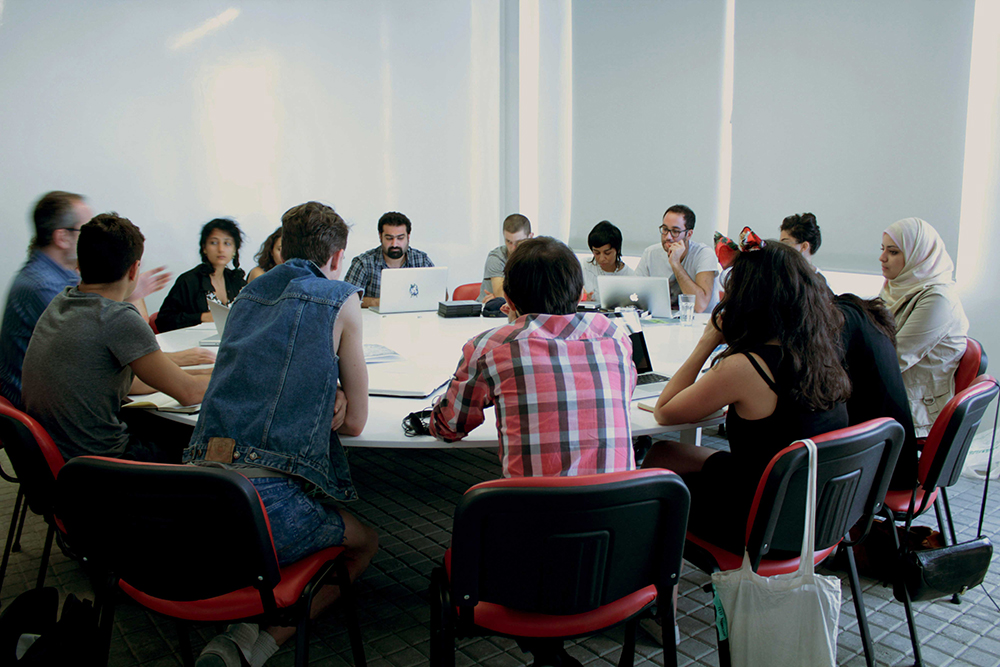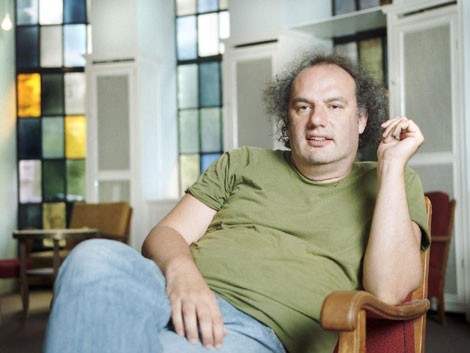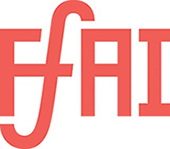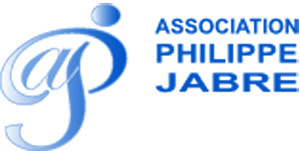Mapping Beirut | Tony Chakar and Matthias Lilienthal (25th September—5th October, 2012, orientation)
The first two weeks are dedicated to an orientation in the city of Beirut with artist/ architect Tony Chakar. Taking Walter Benjamin’s Flâneur as a starting point, Chakar will give participants and teacher a tour of Beirut, its architecture, projects, people – moving apparently without any target, observing, interpreting.
The different quarters of Beirut can be strikingly different – for example, if you compare the reconstructed Downtown area with the city’s peripheral districts. The first questions are: How are we moving around? Which districts are interesting for us? How are the observations presented? Which form are we choosing?
In our everyday life we mostly run or drive from one point to the other without taking the time to really observe anything. If we stand in the street with the specific task of observing (as for an art project), the reality is totally different from how we had imagined it before. Perhaps in this view Downtown is not the gentrified horrible area rebuilt by Solidère – perhaps it is a good place for families to walk on Sundays. What is the relation between public and private space? What is our role as spectators here and what is the role of the people who are living there? How much does our act of viewing interfere with the scene? It is mostly a journey looking for the unexpected.
After three days of research there will be a presentation of the tours. On the one hand this orientation is intended simply to give the participants and teacher who are not from Beirut an introduction to the city in which they will be living for the next 10 months. On the other hand, it can also give the Beirut based participants the possibility to see their own city as an unknown city. In the last days of the orientation we will concern ourselves with a reflection on mapping and discuss its theoretical backgrounds, with Tony Chakar sharing with us his own experiences on this subject.
By way of researching the city, we hope these discussions will offer everybody the opportunity to learn more about each other.
Tony Chakar is an architect and writer. His works include: All That is Solid Melts Into Air; Four Cotton Underwear for Tony; Rouwaysset, a Modern Vernacular (With Naji Assi); Beirut, the Impossible Portrait; A Window to the World; Various Small Fires; Memorial to the Iraq War; Yesterday’s Man (a play-performance with Rabih Mroue and Tiago Rodrigues); The Eighth Day (an ongoing project in the form of a lecture/performance); One Hundred Thousand Solitudes (an ongoing project). He teaches History of Art and History of Architecture at the Académie Libanaise des Beaux Arts (ALBA – UoB), Beirut.
Just ‘Cause you Feel It Doesn’t Mean It’s There | Phil Collins (10th—13th October, 2012)
Our workshop “Just ‘Cause you Feel It Doesn’t Mean It’s There” will focus on affect and performance as central themes of video art and public art practices over the last three decades. It will propose an understanding of the social realm as organised and disciplined by emotional registers, and the mobilisation of cultural and entertainment industries as complex and contested political sites. The workshop will focus on the discussion of texts by key thinkers in these areas, the debates surrounding them, and examine artworks, TV shows, films and videos by artists, directors and cultural producers.
Phil Collins explores in his films, photographs, installations and live events the nuances of social relations in various locations and global communities. He often subverts the conventions of photojournalism to focus on the inherent contradictions of individual and collective systems of representation. Dissecting the political and aesthetic implications of popular visual formats, Collins’s works indicate that the meaning of a picture —be it still or moving— resides neither in its form nor its subject-matter, but in the transferences it establishes between the producer, the subject and the viewer. Throughout, Collins maintains a combination of critical consciousness, immediacy, and the recognition of the camera’s ambivalent potential as an agent of emancipation and exploitation, desire and betrayal. Collins is based in Berlin and Cologne, where he is a professor of video art at the Kunsthochschule für Medien. His works are held in public collections such as, among others, Tate Gallery, London; Museum of Modern Art, New York; and Solomon R. Guggenheim Museum, New York.
Technical Workshop | Belal Hibri and Nadim Mishlawi (15th—18th October, 2012)
“The intention of the workshop is to introduce the participants to the use of sound in contemporary multimedia work and to a conceptual understanding of sound as an artistic medium. Beginning with a brief introduction of the development of music and sound production over the past century, the workshop will draw from the works of pioneering composers and sound artists in an attempt to understand the various techniques and aesthetics of audio in multimedia practices.”
Nadim Mishlawi earned his BA in Fine Arts from the Lebanese American University and his MA in Film Studies from Univerité Saint Esprit Kaslik under the supervision of Dr. Jalal Toufic. In 2006 he opened db STUDIOS for audio post-production with sound designer Rana Eid. Nadim teaches Music for Film, Film Sonore, and Sound Analyses at Université Saint Joseph, IESAV. Nadim currently works as a composer for film and sound designer for video art and experimental film. In 2011 Nadim made his directorial debut with the documentary Sector Zero.
“Creating and presenting digital media today is made complicated by a series of technical hurdles. This workshop will focus on creating a solid foundation in the concepts of audio and video media and its presentation. Frame rates, resolution, formats, compression, capturing and presentation methods will be untangled and defined. A practical discussion of approaches to single channel and video installation work will help students plan and execute a project from concept to completion. Real world examples of contemporary art will help contextualize this information.”
Belal Hibri is a colorist, post-production specialist and principal at Rez Visual, a color-grading boutique based in Beirut. His work has screened at MoMA, Tate Modern, Sundance, and the Dubai and Abu Dhabi Film Festivals. Having studied Art at University, he has a unique background to work with artists in multiple capacities and works regularly with Akram Zaatari.
Mothers, of Invention. | Simon Fujiwara (22nd October—2nd November, 2012)
My mother was a dancer with a company called The Bluebell Girls. Entry criteria to the Bluebell Girls was very high: first of all you had to be blonde or brunette, you needed a certain minimum length of leg, to be able to kick it a certain height, a certain minimum breast size. My mother danced in Paris, Monaco, Singapore, Tokyo and sometime in the 1970s in Beirut, Lebanon. She said they danced at the casino. She told me that it was paradise and that it was bounteous, sensual, that you could ski in the mountains and swim in the sea on the same day. I don’t know if any of this is true but I dreamed of it often as a child. All I have is one photo of her: held in the arms of a strong hairy chested Arabic looking man, kicking her legs in the Mediterranean sea. A man she knew before my father, before I was born. She tells me it’s the only picture she has, all that is left of her memories of Lebanon before they were forced to leave, before it became too dangerous, before years later she would watch it all get blown to pieces on TV.
Taking this single anecdote as a starting point, we will explore the notion of mothers, motherhood and nostalgia through the narrative of Beirut’s history and it’s current state of regeneration. Pooling our memories, educations, experiences and resources and exploring urbanism, architecture, improvisation and scripting the workshop will result in a performance or series of performances that attempt to create a single, archetypal ‘mother of all mothers’ born from our collective consciousnesses. Together we will ask the question: What happens when we give birth to what gave birth to us? When we try to reverse the flow of time?
Simon Fujiwara was born in 1982 in London and spent his childhood between Japan, England, Spain and Africa. In dense dramas about personal relationships, family relations, politics and history, Fujiwara’s work explores biographies and ‘real-life’ stories through a combination of performance, video, installation and short stories. Often appearing within his works himself and assuming various guises from anthropologist to erotic novelist, he also works with a cast of friends, family members and collaborators, presenting versions of themselves and their own biographies as characters within his dramas. In linking fictional and real people, locations and events he explores the boundary between the real and the imagined, often revealing the very fiction of such distinction.
In 2011 Berlin’s Hebbel am Ufer theatre showed his first theatre work The Boy Who Cried Wolf which incorporated three of his acclaimed performances into a full three-act play which subsequently toured to New York’s Performa 12 Biennale and San Francisco’s Museum of Modern Art. In January 2012 Tate St Ives hosted his first major solo survey exhibition ‘Since 1982’ which was held in his hometown of St Ives and accordingly featured six of his key autobiographically charged installations. His works have been shown in solo and group exhibitions around the work including Toronto’s Power Plant, New York’s MoMA, Hamburger Kunsthalle and Tokyo’s Museum of Contemporary Art and at the Venice Biennale and Sao Paulo Biennale among others. In 2010 he was awarded the prestigious Baloise-Art Prize at Art Basel and the Cartier Award at Frieze Art Fair. He has published two artist’s books The Museum of Incest and 1982. He lives and works in Berlin.
Multi Player Video Walks | Rimini Protokoll (13th — 21st November, 2012)
If you follow my tracks, can you read my thoughts?
The Berlin-based performance- and interventions-label Rimini Protokoll has developed a technical strategy that could be described as a heterotopic form of cinema. Or a multi-player-3D-videogame for 15 users. Each workshop participant will be given an iPod to shoot a 5-minute walk telling a short story. Then – as an audience – the participants follow simultaneously step-by-step, videoframe by videoframe, the story that has been filmed in the very same place by someone else. As the spectators start to trace the movie, a multiple story is unfolding. 15 short movies guide the spectators and transform them into both actors and spectators. Pre-recorded past turns into present and questions what could be a form of interactive cinema, where “3D” is not just seen, but also touched, heard, smelt and used.
Rimini Protokoll is made up of Helgard Haug (1969), Stefan Kaegi (1972) and Daniel Wetzel (1969), who studied at the Institut für Angewandte Theaterwissenschaft in Giessen and work together (in various combinations) under this name. They are recognized as being among the leaders and creators of the theatre movement known as “Reality Trend” (Theater der Zeit), which has exerted a powerful influence on the theatre scene. Each project begins with a concrete situation in a specific place and is then developed through an intense exploratory process. They have attracted international attention with their dramatic works, which take place in that colourful zone between reality and fiction. Since 2000, Rimini Protokoll has brought its “theatre of experts” to the stage and into city spaces, interpreted by nonprofessional actors who are called “experts” for that very reason. Since 2004 Helgard Haug, Stefan Kaegi und Daniel Wetzel are artists in residence at Hebbel am Ufer (HAU) Berlin.
A Theory of the Observer | Dirk Baecker (27th — 30th November, 2012)
Ever since quantum physics and philosophy of language in early 20th Century discovered that the observer is not passively watching the world but actively constructing it as their world it is evident that we need a theory of the observer. Heinz von Foerster invented second-order cybernetics to advance it. First steps towards such a theory may considered to have been proposed by the philosophy of German Idealism, Kant, Fichte, and Hegel, even though they did not call it such. Niklas Luhmann’s theory of social systems is designed as a theory of social systems, which observe their environment and themselves, such as families, organizations, and functional subsystems of the society like religion, law, politics, the economy, arts, and sciences. George Spencer-Brown in Laws of Form (1969) developed a calculus of form as a calculus of the observer. The workshop will read and discuss some seminal texts on a possible theory of the observer, and test the laws of form within artworks with respect to their content, format, and aesthetics. Examples are brought in from the work Matthias Lilienthal is doing with the participants of the 2012-2013 Home Workspace Program.
Dirk Baecker is a sociologist and holds the chair for cultural theory and analysis at Zeppelin University, Friedrichshafen, Germany. Baecker studied sociology and economics at Cologne University and Université Paris-IX (Dauphine). He graduated and habilitated in sociology at Bielefeld University and was visiting fellow at Stanford University, London School of Economics and Political Sciences, and Johns Hopkins University. His working fields are sociological theory, systems theory, culture theory, economic sociology, organization research, and management teaching. See his homepage at www.dirkbaecker.com for a list of his publications and links to his English papers.
Moving the Air and More | Natascha Sadr Haghighian (10th — 21st December, 2012)
“Since it is a threat of death, noise is a concern of power; when power founds its legitimacy on the fear it inspires, on its capacity to create social order, on its univocal monopoly on violence, it monopolizes noise. (…) Music then, (…) has the explicit function of reassuring: (…) music as the organization of controlled panic, the transformation of anxiety into joy, and of dissonance into harmony.” — Jacques Attali, Noise – The Political Economy of Music, p. 27
I want to suggest a workshop that combines theoretical, practical and transdisciplinary knowledge about sound, specifically paying attention to noise, its history, its societal functions and its role in art and film. I suggest to have different sections: listening, reading, experiencing technology (including its problems and limits) and creating a small sound piece using field recording in the city. The workshop will have a focus on listening practice, how we hear things, how we conceive and orientate in aural events. This includes listening examples and exercises. Furthermore, it will discuss the political and societal dimensions of sound, how it relates to social and spatial order and to sovereignty. This includes reading excerpts from theoretical texts.
In place of a biographical note, Natascha Sadr Haghighian wishes to refer to www.bioswop.net, a platform released in 2004 for art professionals to borrow, exchange and compile biographies.
Contemporary Philosophical Positions on Political Engagement Through Art | Stefanie Baumann (January 10th—March 14th, 2013)
What do we mean when we talk about politics, art and critique? How can social critique function through an artwork? What does political engagement mean to the artistic field? And how do philosophers approach artistic practices and conceptualize critique of society, media and institutions? This course aims to introduce some major contemporary philosophical positions on social critique, artistic practices and their political implications. This will be achieved through the analysis of different essential 20th Century concepts and problematics, which will be addressed in a series of pre-selected texts. The participatory dynamics of the course will lead to further discussions on theoretical perspectives and artistic engagement, and will consequently help the students to position their own ideas and work. Throughout the sessions, we will examine from a philosophical point of view the different conceptions of perception, society, the political field and artistic intervention.
Stefanie Baumann is a doctoral candidate in Philosophy at the University of Paris 8; her thesis focuses on the project ‘The Atlas Group’ by Walid Raad. She has worked as assistant to several contemporary artists such as Marie Voignier and Mounira Al Solh. She teaches Philosophy of Art at l’Académie libanaise des Beaux-Arts (ALBA) in Beirut.
Close Reading | Harun Farocki (14th — 18th January, 2013)
The video recorder, later the DVD, have opened the option to do a close reading of films. One can study the images, their composition, their style; the editing, the sound effects shot by shot. With different aims: how is a film structured, how close does the narration stick to the plot? The analysis should focus on the films particularity. We should use the five days of our seminar to enhance our skills.
X-Apartments | Matthias Lilienthal with HWP 2012-13 Participants (12th–14th May, 2013)
Produced in cooperation with: 
Performance & Tour | May 12-15, 2013 | Presented as part of the Home Works 6 Forum
The participants of this year’s Home Workspace Program take you on a tour of private homes—those carefully protected spaces where human beings play out the largest part of their life, their conflicts, laughter, hopes and disappointments, safe from the public eye. Carried out a number of times in different cities around the world, X-Apartments is as much a domestic as it is an urban intervention—inviting the viewer to test their expectations of other people’s intimate realities, and to experience their own city through new eyes, as if seeing it for the first time. In its Beirut edition, X-Apartments is also largely a project about walking, in a city that tries to block the activity of walking as much as possible.
—Matthias Lilienthal
With: Darin Abbas, Hisham Awad, Alex Baczynski-Jenkins, Liane Al Ghusain, Romain Hamard, Marwan Hamdan, Sara Hamdy, Maxime Hourani, Jessika Khazrik, Raed Motar, Monira Al Qadiri, Monica Restrepo, Urok Shirhan, Stefan Tarnowski.
Special guests: the students of Phil Collins at the Academy of Media Arts Cologne (KHM).



























